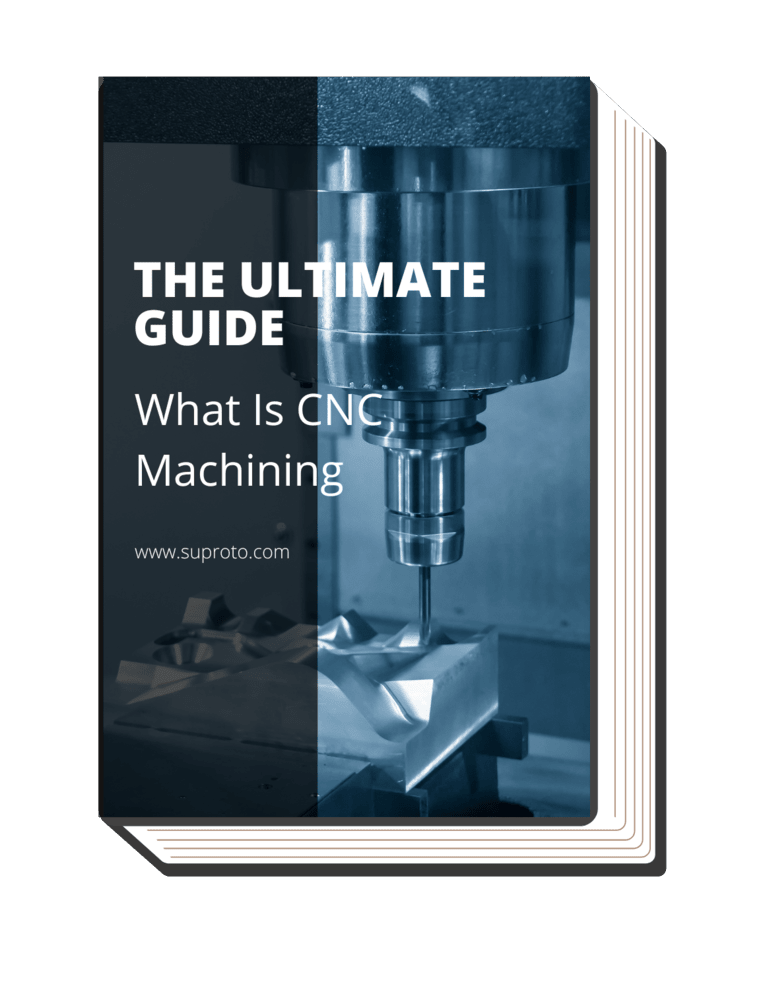Ever wondered what gives product packaging its enticing luster and durability? The key to striking a balance between aesthetics and functionality in product packaging, amidst intense market competition and the need for durable, eco-friendly products, lies in a revolutionary process called In-Mold Labeling (IML).
In this article, we will dissect the intricate process of In-Mold Labeling. But there’s a catch… This guide aims to provide entrepreneurs and business owners with key insights on how In-Mold Labeling can significantly boost product packaging, blending aesthetics and functionality affordably.
So, if you’re seeking to elevate your product packaging to new heights, you’re in the right place. Let’s embark on this enlightening journey!
1. Understanding In-Mold Labeling
In-Mold Labeling (IML) is a revolutionary process that involves integrating the label with the product packaging during the molding process itself. Sound good? This automated technology not only integrates high-quality graphics into molded parts for a seamless product, but also enhances the lifespan of packaging, providing a significant advantage to business owners.
According to a report by Technavio, it’s projected that the in-mold labeling market will expand to reach USD 873.41 million by 2026, with its growth pace set to quicken at a Compound Annual Growth Rate (CAGR) of 4.5%. As someone who has worked extensively in the CNC machining industry, I can attest to the increasing shift towards IML due to its exceptional benefits.
2. Benefits of In-Mold Labeling
The marvels of In-Mold Labeling extend far beyond simply enhancing a product’s visual appeal. This transformative process offers a wealth of advantages that significantly amplify the overall value and desirability of the product. The following are the benefits of in-molding labeling:
Durability and Quality
In-Mold Labeling provides exceptional resilience against a variety of external elements. It safeguards the product against scratching, peeling, and varying weather conditions. And the best part is, CNC machining manufacturers have the ability to create visually stunning packaging that not only captures consumer attention but also eloquently tells their brand story in a captivating manner.
Design and Aesthetics
The application of high-definition graphics and a wide range of finishes in In-Mold Labeling offers unmatched design adaptability, serving as a pivotal turning point for businesses seeking to establish a unique brand identity in a competitive market. How awesome is that? CNC machining manufacturers can create captivating packaging that visually tells their brand story.
Sustainability and Recycling
In-Mold Labeling distinctively employs the same material for both the label and the packaging, culminating in a product that is wholly recyclable. This harmonizes with the increasing consumer demand for eco-conscious packaging solutions. For example, businesses aiming to amplify their commitment to sustainability might opt for bio-based plastics in their packaging strategy
3. Materials Used in In-Mold Labeling
When it comes to achieving successful In-Mold Labeling, the importance of selecting the right material cannot be overstated. This critical decision is based on a careful evaluation of the product’s specific requirements and the desired aesthetic appeal, ensuring a seamless fusion of functionality and visual allure.
Plastic Films and Types
In In-Mold Labeling (IML), plastic films like PP, PE, and PET excel due to their exceptional molding properties, ensuring seamless integration in manufacturing. And now, you’re thinking, “What makes plastic films the go-to choice for In-Mold Labeling?” Well, their inherent capacity to deliver a high-quality finish further solidifies their position as preferred options in the world of IML.
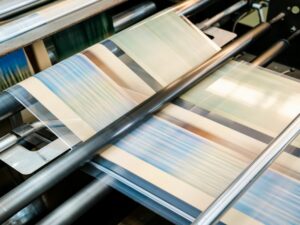
Paper Labels
Paper labels offer a unique aesthetic appeal, perfect for a natural or organic look. With their tactile texture and eco-friendly charm, they add authenticity to product packaging. Here’s why that’s important: CNC machining manufacturers can create a unique visual experience that deeply resonates with consumers who seek a connection to nature or have a preference for sustainable packaging solutions
Foil Labels
Foil labels provide a luxurious metallic finish, enhancing the product’s value and premium feel. Businesses can customize their packaging to align with their brand image using various material options. For instance, a company emphasizing organic and eco-friendly values may opt for paper labels, showcasing a natural aesthetic that resonates with their environmentally-conscious target audience.
4. Types of In-Mold Labeling
Manufacturers can choose from various techniques to apply IML, such as injection molding, blow molding, and thermoforming. Each method offers distinct advantages and is tailored to specific applications, allowing businesses to customize their approach and ensure optimal outcomes. Let’s take a quick overview of each:
Injection Molding
During the In-Mold Labeling (IML) process, the plastic material is heated to a molten state and subsequently injected into a mold that incorporates the label. This fusion of the melted plastic and the label within the mold results in a cohesive and integrated product, where the label becomes an inherent part of the final molded object. At Suprotos, we often use injection molding for products requiring high precision and complex shapes.
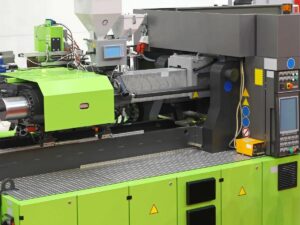
Blow Molding
Blow molding is a manufacturing technique that entails the creation of hollow plastic parts by inflating a heated plastic tube inside a mold. This process is commonly employed for producing bottles and various other hollow items. I’m sure you’re with me on this one—blow molding is a game-changer. It guarantees consistent quality and precise design replication.
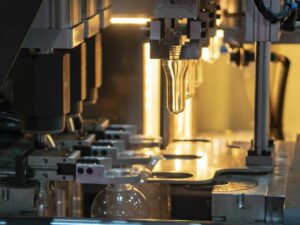
Thermoforming
A plastic sheet is carefully heated to a flexible forming temperature, allowing it to be shaped precisely within a mold. The resulting product is then trimmed to perfection, and ready for use. Here’s the interesting part: Thermoforming is a favored method for larger items like vehicle doors and dash panels, prioritizing precision and durability. CNC Machining excels in meeting stringent quality and functionality standards.
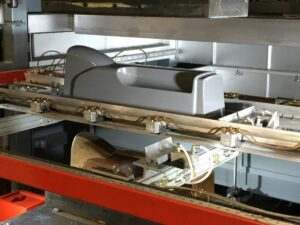
5. The In-Mold Labeling Process
The process of In-Mold Labeling is intricate yet guarantees a superior, long-lasting outcome. Let’s delve into the steps involved to understand its complexity and the craftsmanship required for success.
Step #1 Preparing the Label
The label is meticulously prepared to match the mold’s shape and size, ensuring seamless integration in the In-Mold Labeling (IML) process. This creates a visually striking and cohesive final product. Here’s the point: CNC machining manufacturers meticulously focus on every detail, ensuring that the label seamlessly fits within the mold, resulting in impeccable aesthetics and optimal functionality.
Step #2 Positioning in the Mold
During the In-Mold Labeling (IML) process, the label is carefully positioned within the mold to ensure precise alignment. This critical step is vital to prevent any defects or misalignment that could occur during the molding process. By achieving accurate label placement, manufacturers can guarantee a flawless integration of the label and molded part, resulting in a visually appealing and high-quality final product.
Step #3 Injection, Blow, or Thermoforming Process
The chosen molding process, coupled with end of arm tooling, seamlessly integrates the label with the packaging, creating a unified and cohesive final result. This meticulous integration enhances both the visual appeal and functionality of the product. But there’s a catch-with CNC, attention to detail is paramount to ensure a seamless integration that delivers the desired visual impact and functional integrity.
Step #4 Ejection and Inspection
After production, the finished product is ejected from the mold and undergoes meticulous inspection for quality assurance. Manufacturers carefully examine it to ensure it meets specifications, addressing any issues promptly. For instance, during the inspection phase, one may look for proper label adhesion, color consistency, and the absence of air bubbles or warping.
6. Applications of In-Mold Labeling
In-Mold Labeling’s applicability spans across a variety of industries due to its superior aesthetics, durability, and versatility. The technique presents opportunities for improved brand visibility and customer engagement in a cost-effective, efficient manner. Let’s explore some of these applications:
Packaging
In the packaging industry, In-Mold Labeling (IML) is widely embraced for creating captivating and high-quality product packages. IML offers an excellent opportunity for comprehensive branding and effective information display. According to Plastics Decorating Magazine, IML stands out for its remarkable ability to enhance durability, reduce waste and costs, and noticeably improve the quality of packaging.
Automotive industry
In the automotive sector, In-Mold Labeling (IML) plays a pivotal role in manufacturing durable and highly aesthetic parts such as knobs, dials, and buttons. With Suprotos, our brand, at the forefront of IML expertise, we ensure that labels withstand constant use while maintaining their visual appeal and functionality over time, delivering top-notch quality to our automotive partners.
Consumer Electronics
And this is where people run into trouble: IML enables consumer electronics, like mobile phones and televisions, to exude a flawless and sophisticated appearance. And that’s when you might hit a snag: beyond aesthetics, IML plays a pivotal role in significantly enhancing product durability, which is of utmost importance in the electronics industry
7. Challenges and Considerations In-Mold Labeling
While In-Mold Labeling offers numerous advantages, it also presents certain challenges and considerations that demand attention to successful implementation. It’s essential to navigate these factors carefully to ensure the desired outcomes and reap the full benefits of this transformative packaging technique. Below are the following:
Compatibility With Different Molding Techniques
Not all IML materials are compatible with every molding technique, which means careful alignment of material and process selection is essential. The choice of materials and the molding technique employed must be carefully considered to ensure compatibility and achieve optimal results. Selecting the right combination maximizes IML benefits in product packaging while avoiding compatibility issues.
The table below provides valuable information on the compatibility of various IML (In-Mold Labeling) materials with different molding techniques, helping manufacturers make informed decisions when selecting the appropriate combination of materials and processes to achieve optimal results and avoid compatibility issues in product packaging.
| IML Material |
Molding Techniques Compatibility |
| Polypropylene (PP) |
Compatible with injection molding and thermoforming techniques. |
| Polyethylene (PE) |
Compatible with blow molding and injection molding techniques. |
| Polyethylene Terephthalate (PET) |
Compatible with injection stretch blow molding and injection molding techniques. |
| Polystyrene (PS) |
Compatible with injection molding and thermoforming techniques. |
| Polyvinyl Chloride (PVC) |
Compatible with injection molding and extrusion techniques. |
| Polyethylene Naphthalate (PEN) |
Compatible with injection stretch blow molding and injection molding techniques. |
Design Considerations for Successful IML Implementation
The successful implementation of IML requires careful consideration of label positioning, material selection, and molding techniques, demanding a deep understanding of the intricacies involved in the IML process. Therefore, to ensure effective IML implementation, businesses must adopt a strategic approach that encompasses thoughtful planning and meticulous execution.
Potential Limitations and Drawbacks of IML
IML cost-effectiveness and viability should be assessed on a case-by-case basis, considering factors such as production volume, label design complexity, and specific product requirements. Here’s how it works… By conducting a thorough analysis, businesses can make informed decisions about IML, ensuring optimal utilization of this innovative labeling technique.
Maintenance and Care for IML-Packaged Products
Post-production handling and storage conditions have a direct impact on the quality of IML-packaged products. To ensure the longevity and integrity of these products, adequate measures must be taken. Fortunately, there’s a simple solution: Implement proper handling procedures, optimize storage conditions, and minimize exposure to external factors that could compromise the IML label or packaging.
Conclusion
In conclusion, In-Mold Labeling (IML) is a game-changer in product packaging, enhancing both aesthetics and functionality. Its unique blend of durability, design flexibility, and sustainability offers unprecedented opportunities. Here’s the big secret: By understanding compatibility, designing with IML in mind, and establishing maintenance protocols, manufacturers maximize the value of IML in product packaging.
At Suprotos, our dedicated team is committed to providing top-tier IML solutions tailored to your business needs. Contact us today to elevate your product packaging, transform your brand image, and enhance the overall customer experience. Your success is our priority.




